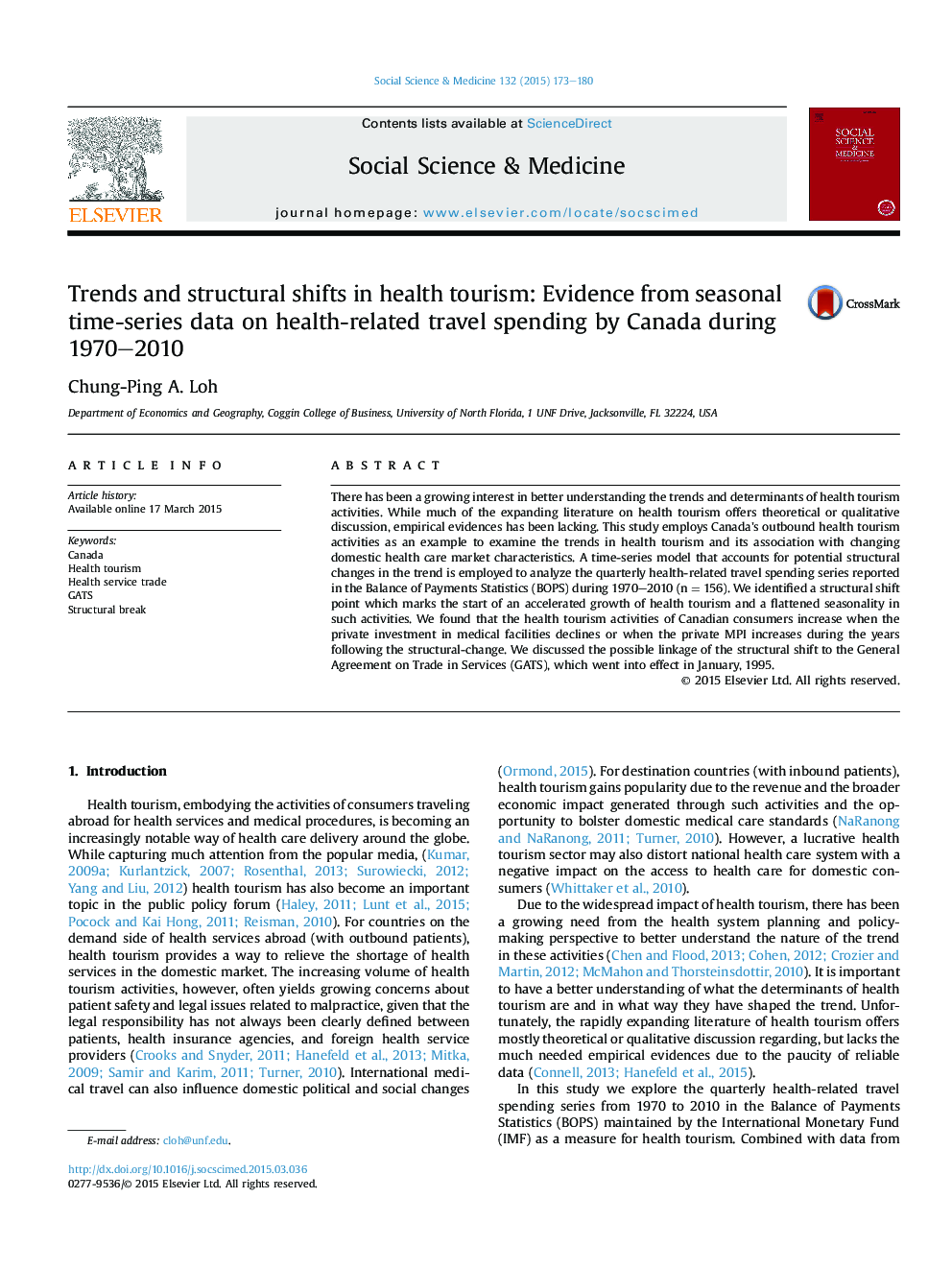| Article ID | Journal | Published Year | Pages | File Type |
|---|---|---|---|---|
| 7332846 | Social Science & Medicine | 2015 | 8 Pages |
Abstract
There has been a growing interest in better understanding the trends and determinants of health tourism activities. While much of the expanding literature on health tourism offers theoretical or qualitative discussion, empirical evidences has been lacking. This study employs Canada's outbound health tourism activities as an example to examine the trends in health tourism and its association with changing domestic health care market characteristics. A time-series model that accounts for potential structural changes in the trend is employed to analyze the quarterly health-related travel spending series reported in the Balance of Payments Statistics (BOPS) during 1970-2010 (n = 156). We identified a structural shift point which marks the start of an accelerated growth of health tourism and a flattened seasonality in such activities. We found that the health tourism activities of Canadian consumers increase when the private investment in medical facilities declines or when the private MPI increases during the years following the structural-change. We discussed the possible linkage of the structural shift to the General Agreement on Trade in Services (GATS), which went into effect in January, 1995.
Related Topics
Health Sciences
Medicine and Dentistry
Public Health and Health Policy
Authors
Chung-Ping A. Loh,
